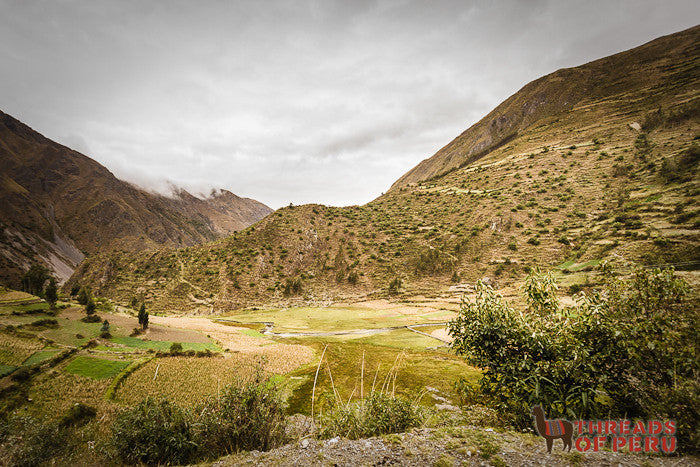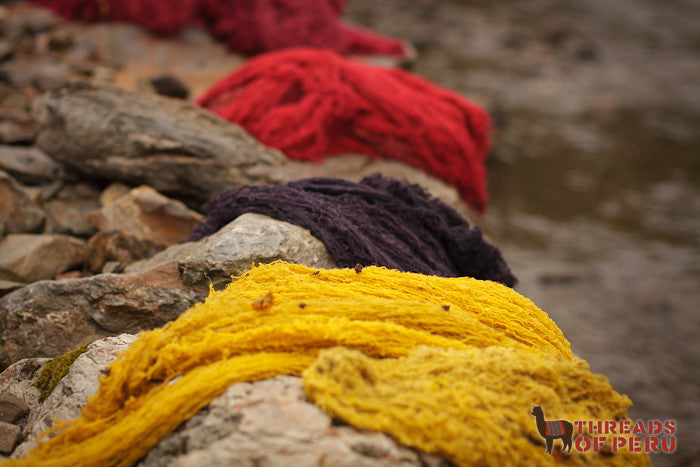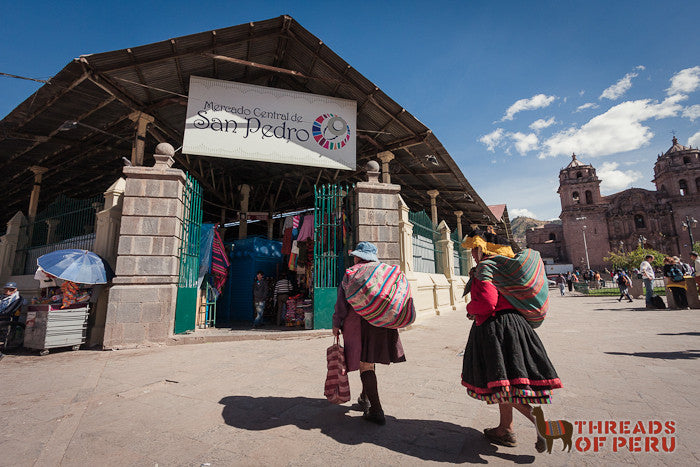
When something goes wrong — landslides, washouts, collapsed bridges — on the roads leading into the mountains around the Sacred Valley, delays can stretch into hours, days, and even weeks. At the end of this rainy season, some of the roads here have seen better days. In the case of Rumira Sondormayo, construction at Ollantaytambo forces visitors to leave their car in the city, walk through construction, and meet another car on the other side. On the other hand, communities like Chaullacocha have always been very difficult to access, needing at least 3 hours of hiking from the road, or 6 hours uphill climb from Rumira Sondormayo and Patacancha.
From May 21 to May 23 Threads of Peru hosted dye workshops in Chaullacocha and Rumira Sondormayo. Because of the road building, only our master weaver, Daniel Sonqo was able to reach Chaullacocha where he worked for two days with the weavers there. On the third day, Daniel hiked out to Rumira where he met with a larger team from Threads of Peru include myself and several students from Chicago’s Lake Forest Academy who raised funds to support our projects.
Our trip to Rumira began early on the 23rd. We arrived at Thread’s office around six in the morning. Cusco, for the most part, was still asleep. Only those with early morning jobs hurried past on the street; their breath billowing in white clouds against the morning chill.
Three of us loaded provisions for the day into a taxi and set out for the Sacred Valley. The road from Cusco to Ollantaytambo is wide and well paved but despite its relative modernity, it’s probably the most dangerous part of the journey to the communities.
The road ascends Cusco’s narrow streets before widening into a highway that summits a high pass and drops over the edge of the Sacred Valley. There are some tight corners and steep drops but the real danger comes from the drivers. Passing an overloaded tuck uphill in an underpowered taxi with bald tires while the distance between you and an oncoming bus quickly narrows might seem harrowing, but here it’s just another day on the road.

We arrived safely in Ollantaytambo, the last stop for trekkers before they embark on the Inca Trial, and unpacked the taxi. A short walk later we met up with the students from Chicago and our guide, Urbano. Because of the road repairs, we had to walk 20 minutes uphill to reach our van that was stuck on the other side of the construction.
At the edge of Ollantaytambo the road turns to dirt and thick vegetation replaces adobe walls. We lumbered slowly up a narrowing canyon passing by farms and fields. As the road climbs higher up the canyon wall, ancient terraces and ruins come into view. I watched farmers work the same ground the Incas worked hundreds of years ago.

After climbing even higher, we rounded a corner and came face to face with another van. This van is wedged against the cliffside, apparently having lost control while navigating a muddy rut. There’s no room to pass on the other side where the edge of the road crumbles down a steep slope.
The only option is to get out and see if we can pull the other van free. A rope is tied from the undercarriage of the first vehicle to a tow-point on ours. After a few minutes of scraping spinning tires, and flying mud, the stuck van came free. Our van backed down to a wider part of the road to let them pass and we were soon on our way again.

The rest of the road didn’t present any problems; however it did present is a mountainous landscape, rocky streams, and patches of wildflowers clinging to existence in the rugged soil. The climb upwards took us to nearly 13,000 feet above sea level before we arrived in Rumira.
As we approach the town we stop to wait for a flock of sheep to clear off the road. Young lambs sprung nimbly up the steep ledge on one side of the van. After we passed, the twin villages of Rumira and Patacancha soon appeared. Small brick buildings lay on the valley floor and a gentle stream divides the two villages. We saw smoke rising from the workshop in Rumira and passed by a man giving a house a fresh coating of adobe.

We park the van on the side of a muddy road and walk back toward the smoke. There are a few brief introductions before we begin observing. The women are busy stoking fires and collecting dyes — the workshop is about to begin.
This is the first in a series of articles about the dye workshop in Rumira. Stay tuned for more stories on the process and the people.









